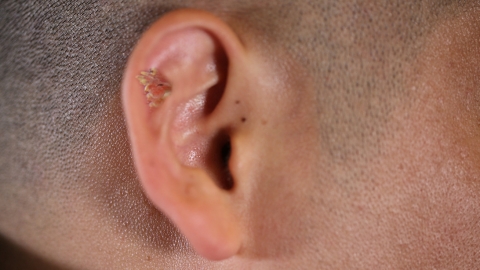What are the differences between flat warts and filiform warts?
Generally, although both flat warts and filiform warts are caused by human papillomavirus (HPV) infection, they exhibit significant differences in appearance, growth location, texture, affected population, and spreading characteristics. A detailed analysis is as follows:

1. Appearance: Flat warts typically present as flat, smooth-surfaced papules, with coloration similar to the surrounding skin or slightly tan. They are often round, oval, or polygonal in shape and tend to appear in clusters. In contrast, filiform warts are characterized by slender, thread-like projections. Their color ranges from brown to skin-toned, with a rough surface and possible keratinization at the tip, giving them a more delicate appearance.
2. Common Growth Sites: Flat warts commonly occur on exposed areas such as the face, back of the hands, and arms—locations prone to friction. They may also appear on the neck and chest. Filiform warts, on the other hand, are more frequently found in skin folds or areas subject to frequent rubbing, such as the neck, eyelids, scalp, and armpits, with the posterior neck being a particularly common site.
3. Texture and Touch: Flat warts feel soft to the touch, have a smooth surface without roughness, and are generally painless upon pressure. They are not easily dislodged by touching. Filiform warts are relatively firmer in texture, with a slightly rough surface due to keratinization. Their tips are slender, and mild pain might occur upon light pulling or friction.
4. Affected Population: Flat warts are more common in adolescents and young adults, especially those with weakened immune systems or frequent minor skin injuries. Their occurrence is often associated with skin trauma and viral transmission. Filiform warts are more likely to develop in middle-aged and elderly individuals, obese individuals, or those with aging skin. Prolonged friction and weakened skin barrier function are important contributing factors.
5. Spreading Characteristics: Flat warts tend to spread rapidly, often due to scratching, which can lead to widespread clusters of warts and a significant increase in number within a short period. Filiform warts spread more slowly, usually growing gradually as single or few lesions, and rarely cause extensive, dense spread.
When observing skin warts in daily life, one can initially differentiate them based on the above characteristics. If removal is required, it is recommended to seek treatment at a qualified medical facility to avoid self-treatment that may lead to infection or viral spread.




